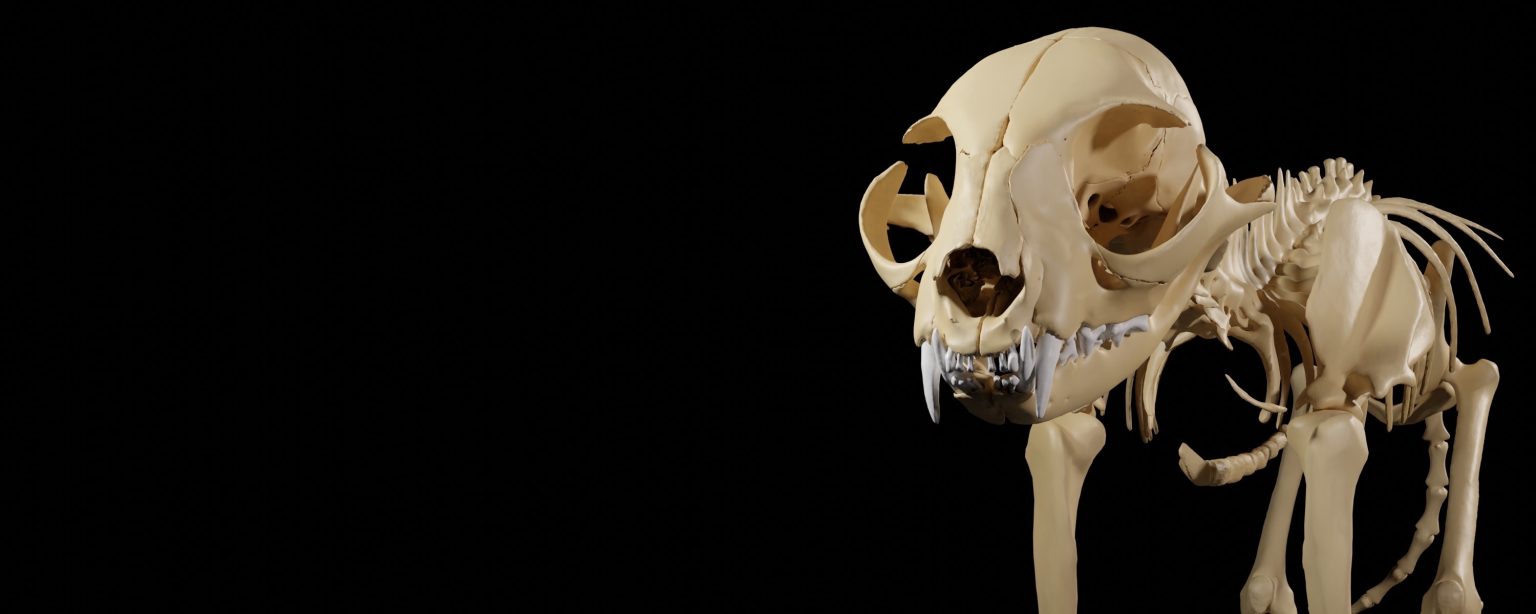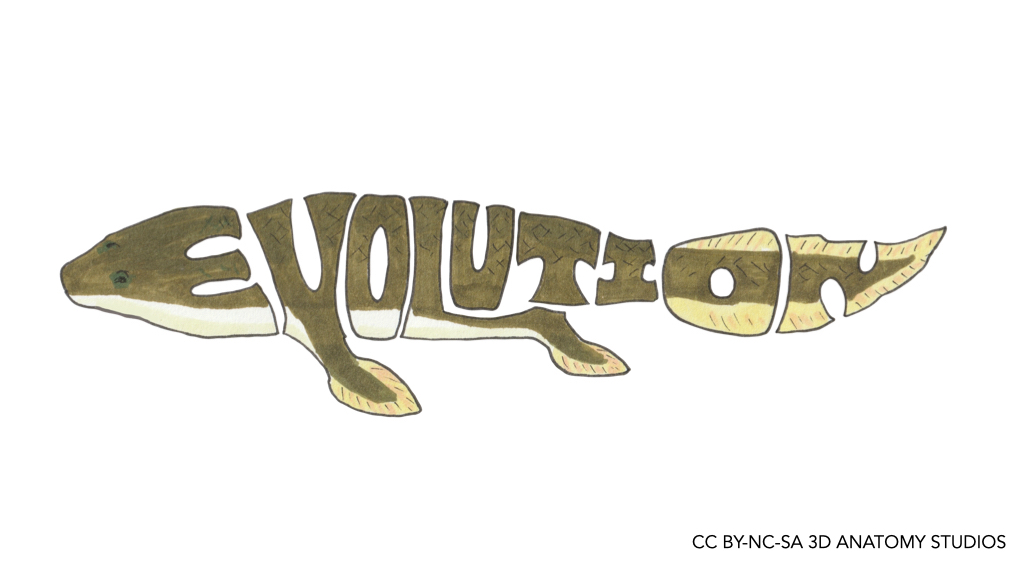We’re all fish! That statement may sound silly, but if you were to go back some 375 million years (some 100 million generations, give or take a few), you’d find our ancestors just starting to venture out of water onto land. We know this because several fossils from around this time show a transition from fish with fins living their entire life in water to four-legged animals able to come out completely on land (called “tetrapods” for having four feet). Tiktaalik roseae is the star fossil of this water-to-land transition.
Although discovered in the Canadian Arctic, Tiktaalik’s habitat when it was alive (the Late Devonian Period) was a warm, freshwater forest. The name Tiktaalik actually means “large freshwater fish” in Inuktitut, one of the Inuit languages spoken in the Nunavut territory where Tiktaalik was discovered. Tiktaalik had the scales, fins, and gills of a fish. But its eyes were positioned more on the top of its head for venturing out of the water and its limbs were also robust enough to push off the ground. In other words, Tiktaalik was our first ancestor to do a push-up.
3D Anatomy Studios member Tim Sosa created this hand-drawn illustration to highlight the importance of Tiktaalik in understanding our own evolution and the evolution of all tetrapods (frogs, turtles, birds, lizards, and mammals like ourselves). With the unfortunate recent politicization of evolution, we sought to create art that would reframe the topic by putting a face on evolution itself.
Illustrated by: Tim Sosa, PhD
License: CC BY-NC-SA 3D Anatomy Studios


